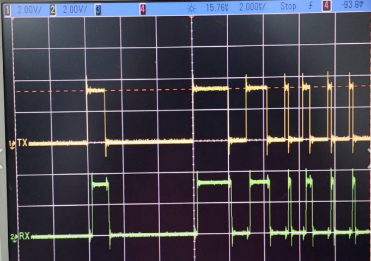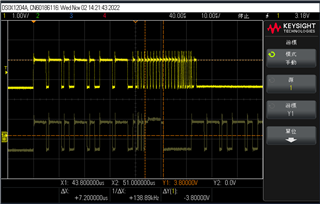Hi Team
Now Customer use TCAN1044A for CAN FD at 5Mbps, monitoring through PEAK-CAN devices.
But the RX Error problem occurs.
We measured the TX/RX waveform and found Glitch on the waveform.
Regarding RX Error, how can we troubleshoot this problem, or what kind of information we need to provide.
Please see the information below.






